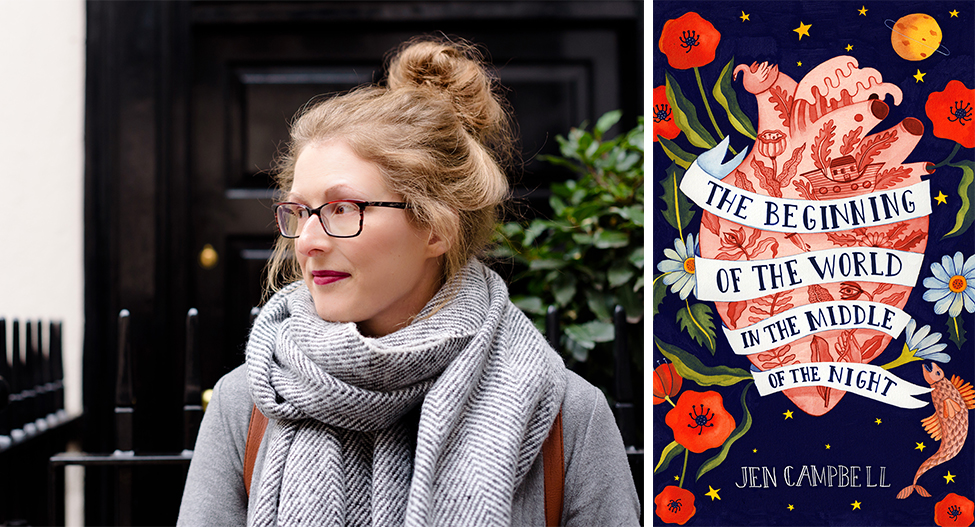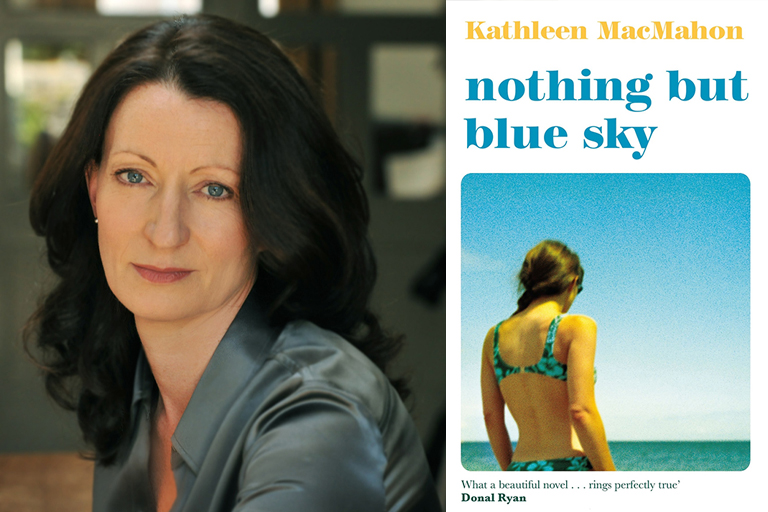Brilliant author, poet and booktuber Jen Campbell has written a wonderful book of stories The Beginning of the World in the Middle of the Night, inspired by fairytales.
We have a bit of a soft spot for fairytales here at the Women’s Prize for Fiction, as the Prize was set up partially due to the founders’ consternation that Angela Carter had never been shortlisted for the Man Booker.
Here’s Jen on the fairytales (including Angela Carter’s) that inspired her collection.
Plus! Head to our Instagram for a chance to win one of 5 signed copies of The Beginning of the World in the Middle of the Night.
The Beginning of the World in the Middle of the Night is a collection of twelve stories. Some of these are inspired by fairy tale, though they aren’t fairy tale retellings. It’s more that the characters are obsessed with storytelling, with unravelling their own narratives. They hunt for versions of themselves in past tales to make them feel more at home.
Fairy tales are living, breathing things that weave throughout history, chopping and changing. They are shapeshifting whispers. It’s fascinating to observe their evolution. Here are a few that inspired stories in this collection:
- The myth of Sedna
In Bright White Hearts, a girl who was born with ectrodactyly, and who works at an aquarium, reflects on the myth of Sedna.
I first stumbled across this story in Angela Carter’s Book of Fairy Tales. Sedna comes from an Intuit fairy tale, and takes many different forms. My favourite is Sedna as a giant. Sedna’s father tells her that she must marry. He sends suitors to her from many different lands, and she rejects them all.
She doesn’t want to be married.
When her father continues to insist, in an act of rebellion, she marries her dog.
“Well, I’m married now,” she smirks. “Aren’t you happy?”
Her father is not happy. In a fit of rage, he drags her out to sea on his fishing boat, and throws her over the side. She clings to the edge but he grabs an axe. He cuts off her fingers one by one, and Sedna falls into the waves. But – wait. Her fingers transform. They turn into the seals and whales of the ocean, and Sedna grows up to be a goddess of the deep.
- The Giant Who Kept His Heart Outside of His Body
Long ago, there was a giant in Norway, who kept his heart outside of his body so that he could live forever. But keeping his heart somewhere else had its down side, too. He turned men to stone in rage, for they could love and he could not, and he locked a princess inside his house to stop her marrying the sons of kings.
Animals, the first story in this collection is about a world where love is dwindling. Humans purchase animals hearts online to place inside themselves or loved ones, wooing the hearts before they transplant them, in an attempt to manufacture love. ‘The Giant Who Kept His Heart Outside of His Body’ is a Norwegian tale about, you guessed it, a giant who kept his heart outside of his body. He placed it in an egg for safe-keeping, thinking life would be better if no one could find it, if no one could break it. But that made him resent all those who could love and, bitterly, he began turning all humans to stone.
- The Wild Swans
In the same story (Animals) the narrator tells his sleeping wife about ‘The Wild Swans.’ This tale has many different versions, under several names, but in this version a king’s wife dies and, in his grief, he marries a witch. The witch is jealous of the king’s children, so she turns his six sons into swans. Worried the same fate awaits her, the king’s one daughter flees the kingdom. She learns that if she knits six tunics made of flowers, she will be able to transform her brothers back into humans. There is a catch. She can only do this if she doesn’t talk to anyone while she does it. This fairy tale explores society’s expectation of female silence (akin to The Little Mermaid), and of bodily difference as, when the daughter finally is able to knit all six tunics, the final one is missing an arm. Her sixth brother, whilst being transformed back into a human, lives with a swan arm for the rest of his life.
They swooped down and pulled on the tunics and immediately turned back into her brothers. The sixth still had a swan arm attached to his human body, which he flexed and admired in the light of the sun.
- Jack and the Beanstalk
Along that theme of bodily difference, in my story Plum Pie. Zombie Green. Yellow Bee. Purple Monster, teenagers who are sprouting plants from their bodies attend a summer camp, where they are examined by scientists. They’re fed Miracle-Gro in the sun, and saplings are cut from their bodies and locked up in laboratories. These characters muse on Jack and the Beanstalk, wondering what might have happened if Jack hadn’t planted those magic beans but had swallowed them down, instead. They huddle around camp fires, reclaiming their own stories; trying to take back control in a society which shuns them.
If Jack had taken those magic beans and planted them inside himself, he could have become one of us. He could have found himself in the headlines for different reasons, plastered to the side of Lily’s tent, where she used to stick all the important news.
A doctor in Beijing has found a dandelion growing inside the ear canal of a sixteen-month-old girl. It had partially flowered, and was said to be very itchy.
A Russian man, suspected of having cancer, was found to have a small fir tree growing inside his left lung. When they took it out, he took it home.
These are our people.
Once, in Spain, a lily was found growing from the heart of a boy who couldn’t read. We have always tumbled out of newspapers and myth. Hyacinths flowered from the blood of Apollo. Carnations bloomed from the tears of Mary. Snowdrops are said to be the hands of the dead.
You have to find us between the lines.
How strange they think we are.
The Beginning of the World in the Middle of the Night by Jen Campbell is a collection of twelve haunting tales. Spirits in jam jars, mini apocalypses, animal hearts and side shows.
“Enchanting and illuminating.” – Carys Bray
“I found myself mesmerised.” – Claire Fuller








